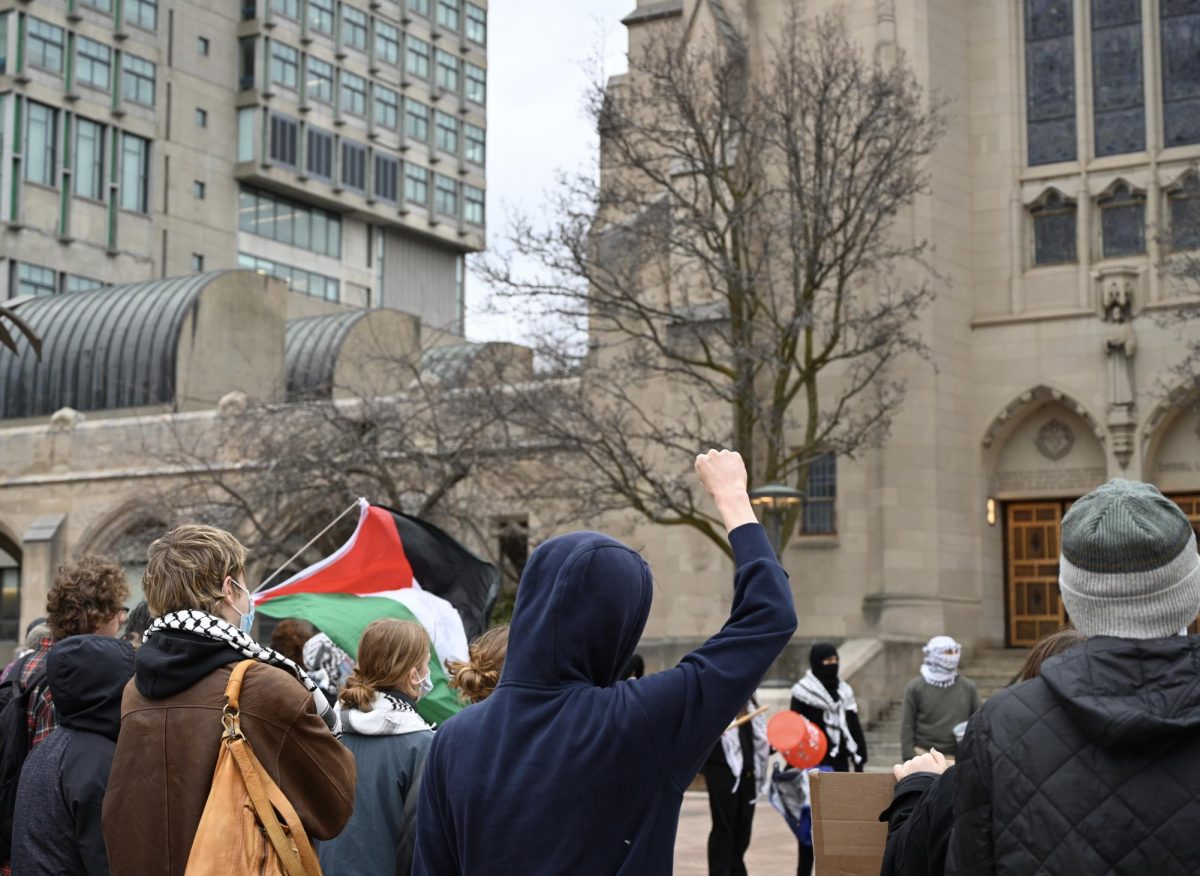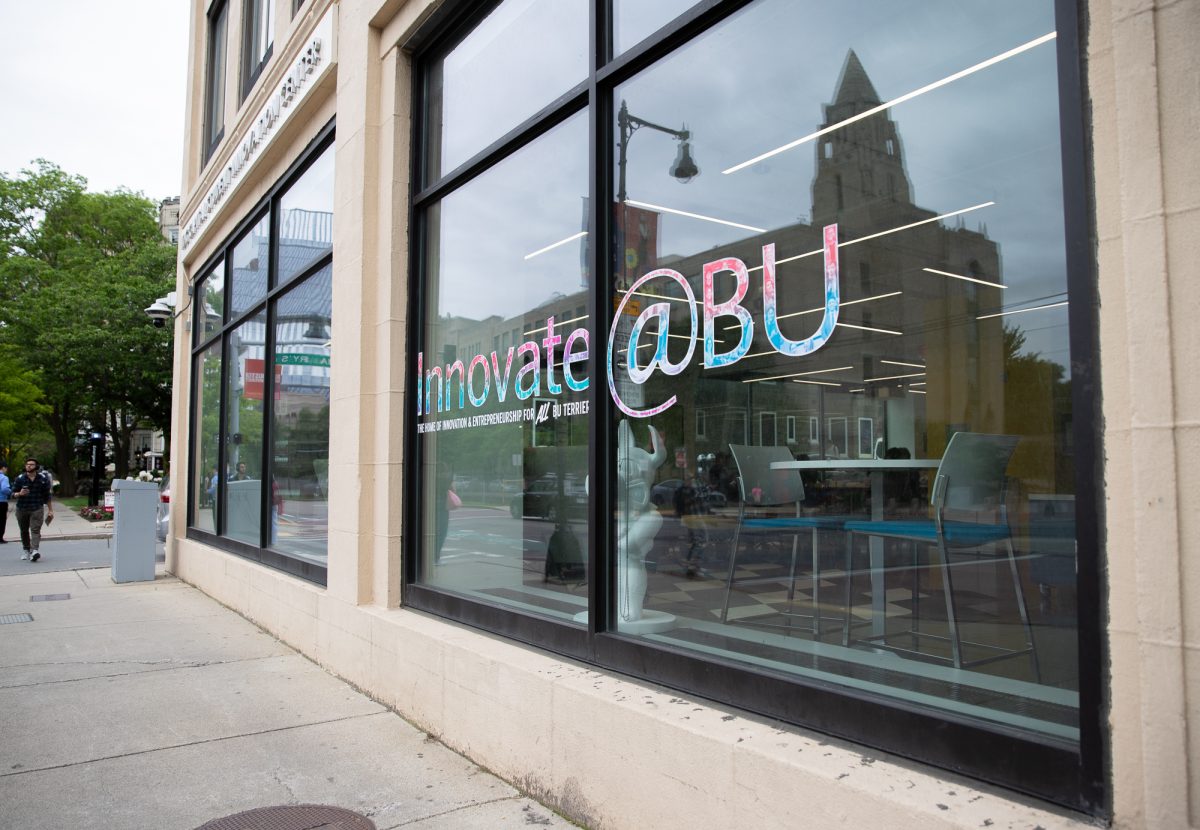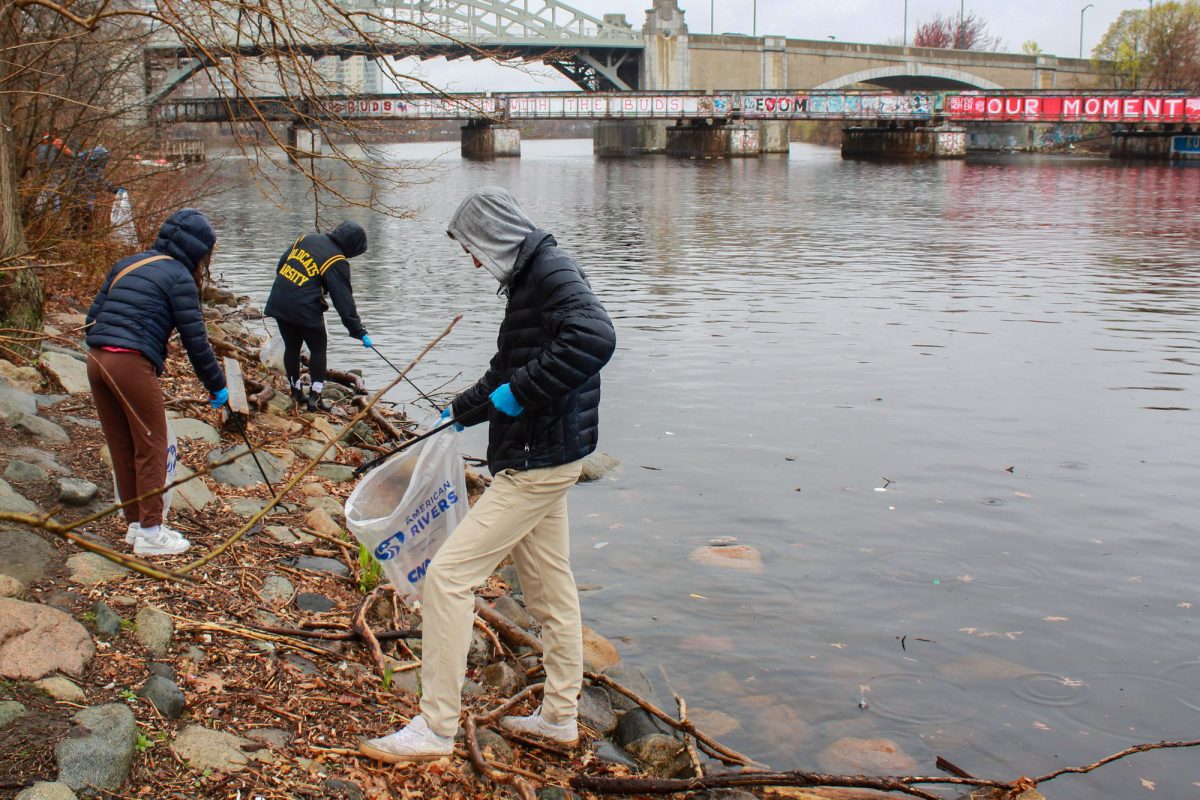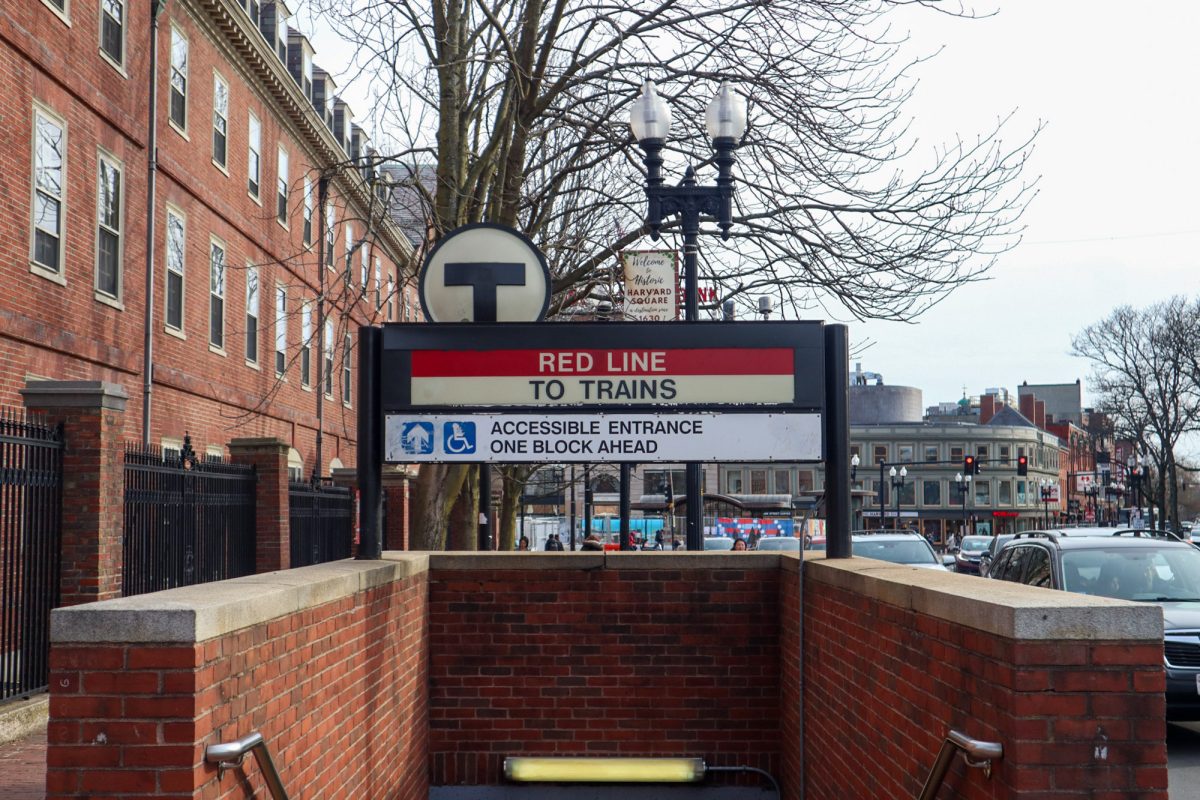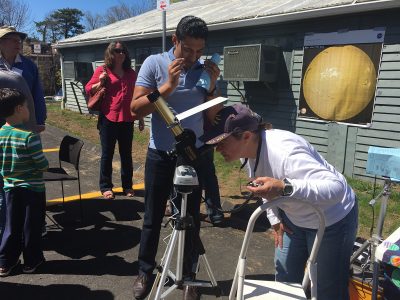
Local astronomers asked children from the Cambridge community if they believed in aliens as they dropped smashed bananas, dish soap and rubbing alcohol into coffee filters, extracting the fruit’s DNA. Astronomers asked the children, “What if aliens use something different than DNA? What if we send something like this to Mars to learn about them?”
Several volunteer astronomers gathered to teach children of all ages about astrobiology, solar physics and innovative space technologies at the “Cambridge Explores the Universe” event presented by the Harvard-Smithsonian Center for Astrophysics as part of the Cambridge Science Festival on Sunday.
Erika Wright, the event’s main coordinator and education specialist at CFA, said space is always an exciting thing for people to learn about.
“It’s a chance for us to get younger generations excited about science in a new field that they may not know so much about,” Wright said. “Maybe we can create a few future scientists.”
The event was spread out into four areas — Astro 101, Tech Hub, Observatory Circle and Color of the Universe — where children and parents had the opportunity to do hands-on activities that gave them a glimpse into the wonders of the universe.
Children made their own star clocks in Astro 101 by using the Big Dipper constellation to tell time, and in Tech Hub, they watched 3-D printers create models of equipment used in space.
The Amateur Telescope Makers of Boston — an astronomy club devoted to telescope making, observing and studying since 1934 — set up five solar telescopes that allow the human eye to look at the sun and its features with ease outside on a hill.
One parent wrote in a message that her son likes planets and everything related to the universe, so they couldn’t miss the opportunity to see the sun in a telescope.
“I also loved to see my son making a solar system proportional to his height in the first station,” wrote Amanda Dantas, 33, of Cambridge. “The student who helped him was very friendly and enthusiastic.”
“Cambridge Explores the Universe” has been running for over 10 years, said Wright, who has been the main coordinator for two years. She said this year brought two new displays — the Chandra X-ray Observatory and a tour of photographic plate stacks.
NASA’s Chandra X-ray Observatory is a space telescope that detects X-ray emissions from hot spots in the universe. CFA runs the satellite, processes the data and sends it to other scientists to work on. Attendees of the event were able speak to astronomers on the project and learn how the telescope works and what information it records.
Harvard’s photographic plate stacks — digitalized scans of stars, moons and star spectroscopy on glass plates — were on display for the public to see some of the first pictures of space.
The collection of over 500,000 plate stacks is part of the Digital Access to a Sky Century at Harvard project and is the largest and only collection in the world that has information from both the northern and southern hemisphere for a 108-year time span.
The tour gave visitors the chance to see both original and digitalized versions of the data collected from over 80 women computers – women who calculated data for projects — and see the tools used to measure celestial bodies in a time before photography existed.
A volunteer astronomer at one of the “Ask an Astronomer” tables said these types of events are important because astronomy is not covered as much as other subjects in elementary and middle schools.
“I think it’s important for scientists to keep in touch with what the general public is interested in,” said Jane Huang, a Harvard PhD student studying radio interferometry, ISM chemistry and planet formation. “Because we rely so much on their support, it’s important to show that we support them too.”
Huang said Albert Einstein was her only image of a scientist as a child, but as she grew up, she realized there was so much more than what he did.
“Talking to real scientists doing active research is critical for demystifying the science process,” Huang said. “Being able to talk to people of different backgrounds is important for kids to say, ‘I can do this.’”






